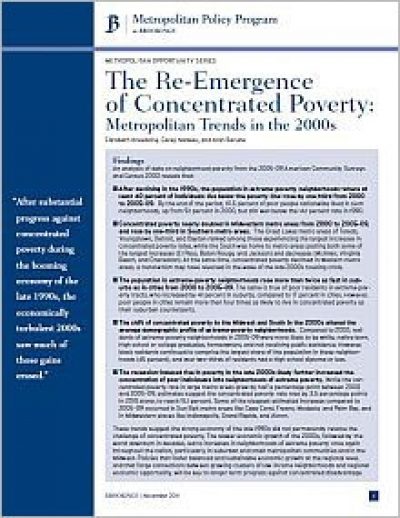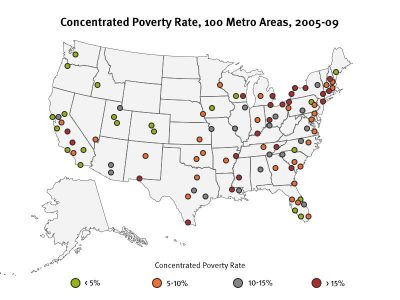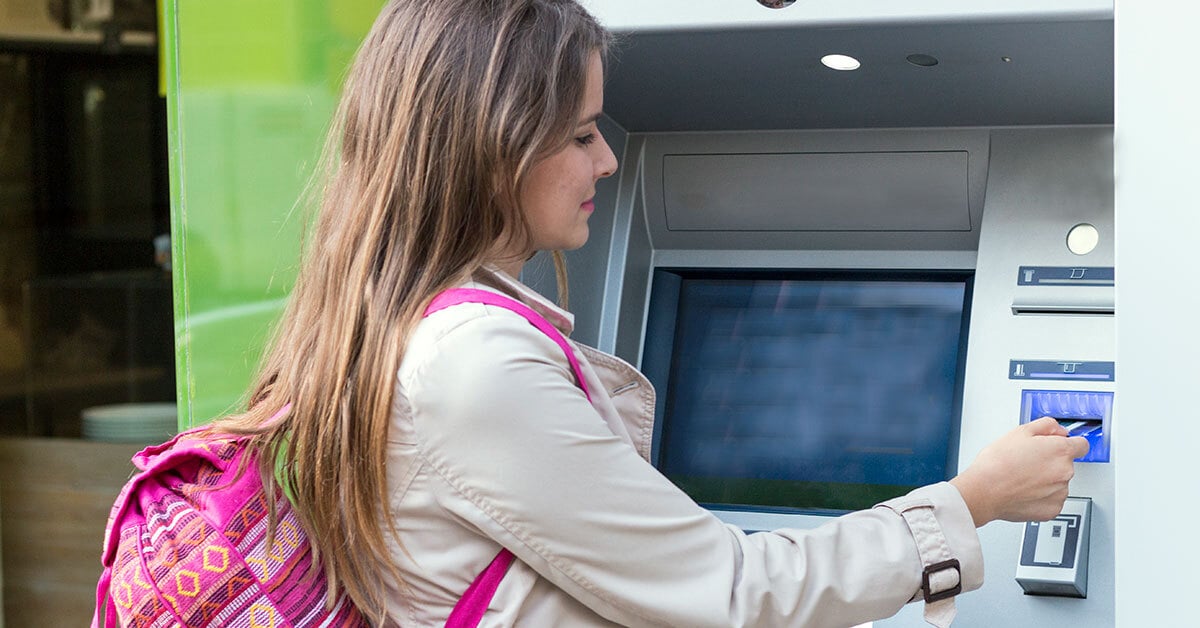Summary
Despite the strong economy of the late 1990s, concentrated poverty persisted. The slowed economic growth of the early 2000s followed by the most severe economic downturn in decades led to increases in neighborhoods of extreme poverty once again throughout the nation. These neighborhoods are growing in suburban and small metropolitan communities, particularly in the Midwest.
Over a 10-year span, the country saw the poor population grow by 12.3 million, driving the total number of Americans in poverty to a historic high of 46.2 million – over 15% of the nation’s population living below the federal poverty line.
These trends have changed the location of poor households within urban, suburban and rural communities. Considering the geographic distribution of poverty is important to addressing social problems such as crime rates, poorer health outcomes, lower-quality educational opportunities and weaker job networks. Areas of concentrated poverty create a “double burden” by adding burdens set by where they live to their own personal burden of poverty.









